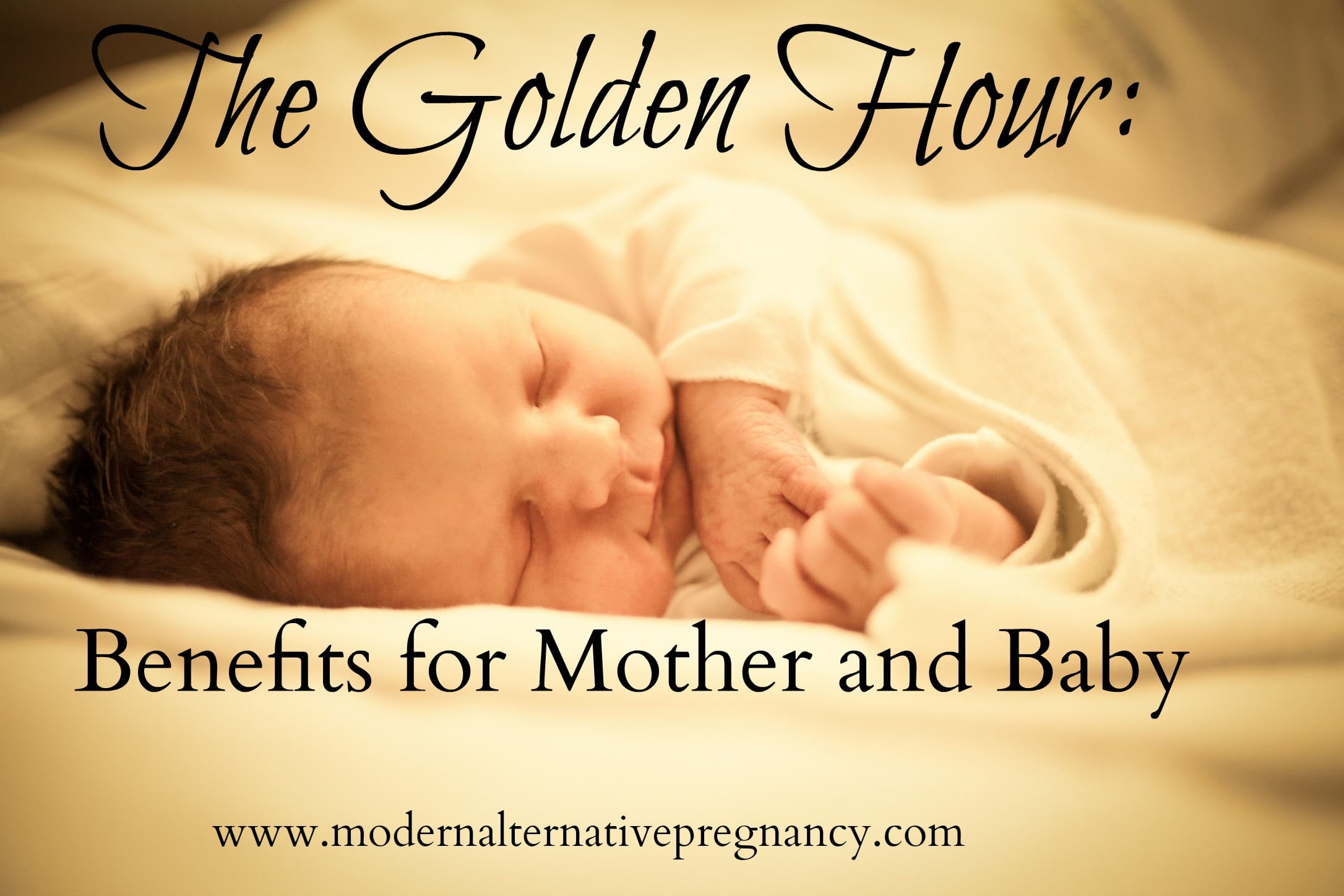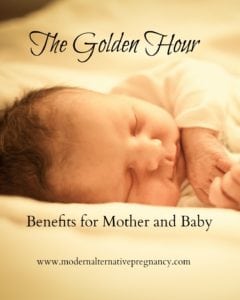By Amy, Contributing Writer
Over the past few centuries birth has become increasingly medicalized and the first hour after a newborn is born is often full with unnecessary medical interventions with the sole purpose to hurry the birth process along and make room for the next patient. What happens in the first hour of a newborn’s life is vital to maximize bonding between the mother and baby and has been shown to to be critical to the baby’s growth and development. Here are some important factors to consider in the all important ‘Golden Hour.’
The Golden Hour: Benefits for Mother and Baby
9 stages of a baby’s first hour
The 9 stages of baby’s first hour has been well documented and it vital to look at how the baby naturally develops within this hour to ensure its needs are met.
The Birth Cry
The first stage is the birth cry. This distinctive cry occurs immediately after birth as the baby’s lungs expand.
Relaxation
The second stage is the relaxation stage. This stage usually begins when the birth cry has stopped.
Awakening
This stage usually begins approximately 3 minutes after birth. The baby will open it’s eyes and may exhibit head and mouth movements.
Activity
Increased mouthing and sucking movements occur around 8 minutes after birth .
Rest
The newborn will rest throughout the first hour.
Crawling
On average, 35 minutes after birth a baby will start to crawl towards the mother’s breast.
Familiarization
The baby becomes acquainted with the mother by licking the nipple and touching and massaging her breast. This stage usually begins around 45 minutes after birth and can last for 20 minutes or more.
Suckling
Baby’s first experience of breastfeeding.
Sleep
The final stage is sleep and can occur between 1 – 3 hours after birth
Third stage of Labour
It has become standard practice in hospitals to provide an active management of the third stage by offering a hormone injection immediately after the birth of the baby. The injection consists of an oxytocic agent that causes the uterus to contract strongly and many obstetricians believe this quickens the time it takes for the placenta to be delivered thus minimising blood loss and the risk of postpartum hemorrhage. However, there is little evidence that supports this theory and injections have actually been linked to the very problems it set out to address.
The optimal alternative to this is a physiological third stage where no interventions occur and the body is naturally allowed to deliver the placenta in its own time with the help of the mother’s natural hormones. This method would always include delayed cord clamping. A natural third stage is much more than simply allowing the placenta to deliver without medication and acknowledgment to the hormonal and emotional process of both mother and newborn should always be considered. Having a natural birth and third stage is the first important step in achieving an undisturbed Golden Hour which will bring both mother and baby long lasting benefits.
Skin to Skin
Immediately after birth, the mother and the baby should have uninterrupted direct skin to skin contact for as long as practical. Having skin to skin contact for 2 hours following the birth has been shown to increase the chances of a successful breastfeeding relationship and even improves the growth of babies. It has been shown that baby is happier and that their body temperature, heart rate and breathing rates are more stable. A recent study has also showed a reduction in postpartum hemorrhage in mothers who had skin to skin contact.
Initiation of Breastfeeding and Breast Crawl
If you’ve never witnessed a baby doing the ‘Breast Crawl’ I highly recommend you find a video of it online. It is a marvelous sight watching a newborn find its first source of nourishment and comfort.
The WHO recommends that all babies should be breastfed within the first hour of being born to reduce the risk of infant mortality and the Breast Crawl is a wonderful way to initiate breastfeeding.
In the past, babies would be placed on the mother with its lips placed on or near the mother’s nipple believing the baby needed help to begin breastfeeding. However, every baby has the ability to find its mother’s breasts on their own if placed on the mother’s abdomen. Early initiation of breastfeeding has many benefits such as keeping the baby warm and helping uterine contractions.
It is vital to ensure baby receives colostrum and the high concentration of antibodies that it brings with it and to ensure mother and baby bond and establish breastfeeding. Evidence has shown that the benefits for both mother and baby are more likely to be achieved using the Breast Crawl as it allows the newborn to acclimatize to its new environment at its own speed.
The Breast Crawl is associated with various sensory and neuroendocrine components which allows the baby to move and facilitate its survival in their new world. Smell, vision and tastes helps the baby detect and find its mother’s breast and auditory inputs and touch need to be carefully managed to create a suitable environment for the baby to feel comfortable.
To have a successful Breast Crawl, mothers should opt for a natural birth including a physiological third stage. Mothers and babies should not be washed and mother-baby visual contact should be made. Skin to skin contact should be maintained at all times.
Achieving a Golden Hour
An undisturbed golden hour highly impacts mother and baby’s health. It is therefore vital to make informed choices about what happens in this very critical period.
Choosing a home birth or birth center will increase your chance of a natural birth and undisturbed golden hour. Care providers should be requested to leave all routine checks until you and baby are ready. Ensure you opt for a natural third stage and delay cord clamping. Creating a relaxing, warm environment to ensure the promotion of oxytocin and prolactin and ensure baby remains unwashed.
Both my children were born peacefully at home and so I have been fortunate to achieve an optimal Golden Hour both times.
How were you able to bond with your baby after birth?
Sources
Anderson GC, Moore E, Hepworth J, Bergman N. Early skin-to-skin contact for mothers and their healthy newborn infants (Cochrane Review). In: The Cochrane Library, Issue 2 2003. Oxford: Update Software.
Geeta Gathwala, Bir Singh, and Jagjit Singh; Effect of Kangaroo Mother Care on physical growth, breastfeeding and its acceptability. Trop Doct. 2010; 40(4): p. 199-202.
Perrine, R, et al (2016). Observation of Skin-to-Skin Contact and Analysis of Factors Linked to Failure to Breastfeed Within 2 Hours After Birth. Breastfeeding Medicine, doi:10.1089/bfm.2015.0160.
Rogers J, et al. Active versus expectant management of third stage of labour: the Hinchingbrooke randomised controlled trial. Lancet 1998;351(9104):693-9.
Saxton, A., Fahy, K., Rolfe, M., Skinner, V., & Hastie, C. (2015). Does skin-to-skin contact and breast feeding at birth affect the rate of primary postpartum haemorrhage: Results of a cohort study. Midwifery, 31(11), 1110-1117.



